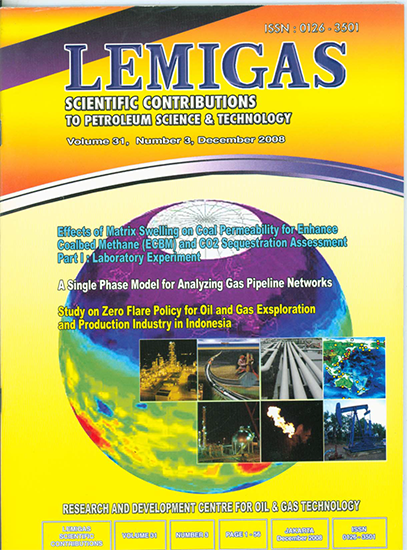EFFECT OF BIOSURFACTANT PRODUCED BY BACILLUS IN OILY WASTEWATER DEGRADATION
DOI:
https://doi.org/10.29017/SCOG.31.3.1015Keywords:
Biodegradation, Biosurfactant, Wastewater, BacillusAbstract
Liquid waste from oil industry activities has potential cause environmental pollution. These liquid wastes, containing hydrocarbon and heavy metals, are mostly toxic. Therefore, biotechnology by means of biological treatment can be applied for decomposing the toxic liquid wastes. The biosurfactant production from some microorganisms can support hydrocarbon degradation. The objective of this study is to examine the crude biosurfactant that is extracted from the selected Bacillus which was precipitated by using methanol on acid moiety. The crude biosurfactant extract were tested to support hydrocarbon degradation. Three species of Bacillus used in this experiment were compared based on their respective biosurfactant production. The results showed that the percentage of hydrocarbon degradation on liquid waste from refinery by the three Bacillus species were 90.23% (Bacillus subtilis), 88.72% (Bacillus licheniformis), and 73.43% (Bacillus laterosporus). The concentration of remaining oil after 28 days was 20.44 mg/L, 23.38 mg/L, and 54.87 mg/L, respectively. The decrease of COD were 84.90%, 84.04%, and 80.68%, respectively, and the COD value after 28 days treatment were 165 mg/L, 174 mg/L, and 211 mg/L.
References
Bartha, R. and R.M. Atlas, 1987, Transport and Transformation of Petroleum Biological Processes. In Boesch, D.F. and N.N. Rabalais (eds). Long Term Environmental Effects of Offshore Oil and Gas Development, Elsevier Applied Science Publishers, Ltd. New York.
Bossert, I. and R. Bartha, 1984, The Fate of Petroleum in Soil Ecosystem in Microbial Degradation Hydrocarbon. The Environmental Microbiology, American Society for Microbiology, Mac. Millan Publishing Company.
Cooper, D.G., C.R. MacDonald, S.J.B. Duff, and N. Kosaric, 1981, Enhanced Production of Surfactin from Bacillus subtilis by Continuous Product Removal and Metal Cation Additions. Appl. Environ. Microbiol, 42(1) : 408-412.
Eckenfelder, W.W., 1989, Industrial Water Pollution Control, Second Eds., McGraw-Hill Book Company.
Leni Herlina, 2005, Pengaruh Bacillus Penghasil Biosurfaktan dalam Mendegradasi Minyak Bumi pada Limbah Cair Industri Minyak Bumi, Tesis, Sekolah Pascasarjana IPB, Bogor.
Margaritis, A., J.E. Zajic, and D.F. Gerson, 1979, Production and Surface-active Properties of Microbial Surfactants, J. Biotechnol and Bioeng., 21 : 1151-1162.
Rocha, F.J.M., V.H. Rodriguez and M.T. Lamela, 2001, Biodegradation of Diesel Oil in Soil by A Microbial Consortium, Water, Air, and Soil Poll., 128 : 313-320.
Yani, M., A.M.., Fauzi, and F. Aribowo, 2003, Bioremediasi Lahan Terkontaminasi Senyawa Hidrokarbon, dalam Prosiding Seminar Bioremediasi dan Rehabilitasi Lahan Sekitar Perminyakan dan Pertambangan.
Zajic, J.E., H. Guignard, and D.F. Gerson, 1977, Emulsifying and Surface Active Agent from Corynebacterium hydrocarboclastus, Biotechnol. and Bioeng., 19 : 1285-1301.
Downloads
Issue
Section
License
Copyright (c) 1970 SCIENTIFIC CONTRIBUTIONS OIL AND GAS (SCOG)

This work is licensed under a Creative Commons Attribution 4.0 International License.
Authors are free to Share — copy and redistribute the material in any medium or format for any purpose, even commercially Adapt — remix, transform, and build upon the material for any purpose, even commercially.
The licensor cannot revoke these freedoms as long as you follow the license terms, under the following terms Attribution — You must give appropriate credit , provide a link to the license, and indicate if changes were made . You may do so in any reasonable manner, but not in any way that suggests the licensor endorses you or your use.
No additional restrictions — You may not apply legal terms or technological measures that legally restrict others from doing anything the license permits.














